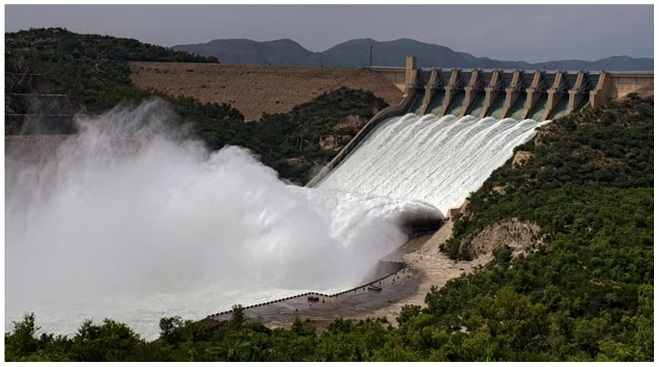Notice sent to Pakistan on Indus Water Treaty
Is India going to stop Pakistan’s water?
In truth, the Sutlej, Beas, and Ravi waters have been granted to India under the terms of the Indus Water Treaty, while the Indus, Jhelum, and Chenab waters have been allocated to Pakistan.
After nine years of discussions, India and Pakistan signed the Indus Waters Treaty in 1960, which also includes the World Bank as a signatory.

Expansion
Regarding the September 1960 Indus Waters Treaty revision, India has sent a notification to Pakistan.
Government sources claim that India has been a dependable ally and responsible partner in putting the Indus Water Treaty with Pakistan into full effect. The Indus Treaty’s clauses have suffered as a result of Pakistan’s actions.
India was compelled to issue a notification as a result. This notification is intended to provide Pakistan the chance to engage in intergovernmental discussions within 90 days to address the Indus Waters Treaty breaches.
Because circumstances have changed over the previous 62 years, this procedure will also revise the Indus Water Treaty.
The reason behind the notice
Government sources claim that Islamabad’s refusal to put the pact into effect has caused the notification to be issued. On January 25, the notification was delivered by way of the Indus Water Commissioners.
With a few exceptions, the treaty permits India to utilize the waters of the eastern rivers without limitation.
By the rules of India, the Ravi, Sutlej, and Beas rivers’ waters may be used for transportation, energy, and agriculture.
Pakistan asked for a neutral expert to be appointed in 2015 to look at technical concerns with the Indian Kishanganga and Ratle hydropower dams.
Pakistan unilaterally renounced this proposal in 2016 and suggested bringing these issues before the Court of Arbitration. If reports are to be accepted, Pakistan’s unilateral action violates the procedure established in Article 9 of the treaty for resolving disputes.
Pakistan has consistently declined requests to talk about the Indus Water Treaty.
During the five meetings of the Permanent Indus Commission from 2017 to 2022, Pakistan refused to discuss the matter, despite repeated attempts by India to advance in a mutually agreed way.
The World Bank has started both the Neutral Expert and Court of Arbitration procedures in response to Pakistan’s ongoing demand. Such parallel viewpoints on related topics do not come under any of the Indus Water Treaty’s clauses.
What is Indus Water Treaty?
The Indus system mainly includes the Indus, Jhelum, Chenab, Ravi, Beas, and Sutlej rivers.
- The basins of these rivers are mainly shared by India and Pakistan. A small part of it is mixed with China and Afghanistan.
- After getting independence in 1947 and after the partition of the country, like many other issues, a dispute started between India and Pakistan on the issue of water.
- When there was no solution to this issue, in 1949 an American expert, David Lilienthal, advised solving the problem at the technical and business level rather than at the political level.
- He advised both countries that they can also take help from the World Bank in this matter. In September 1951, Eugene Robert Blake, then president of the World Bank, agreed to mediate.
- After this, after years of negotiations, on September 19, 1960, there was an agreement between India and Pakistan. This is called the Indus Water Treaty of 1960.
- This treaty was signed by the then Prime Minister of India Jawaharlal Nehru and the then President of Pakistan Ayub Khan in Rawalpindi.
- The terms of the treaty were implemented on January 12, 1961. Under the treaty, the distribution of water from 6 rivers was decided, which go from India to Pakistan.
- India was given full rights over the water of 3 eastern rivers (Ravi, Beas, and Sutlej).
- It was decided to give the uninterrupted flow of water from the remaining 3 western rivers (Jhelum, Chenab, and Indus) to Pakistan.
According to the standards set in the treaty, the water of western rivers can also be used in India and about 20 percent of it is for India. Under the agreement, India has the right to store 3.6 million acre-feet of water from the western rivers.
India can irrigate the crops planted in 7 lakh acres of area with the water of these western rivers. India can build hydroelectric projects on these rivers, but it will have to build run-of-the-river projects only, under which water is not stopped.
By the way, if India wants, it can also take the help of Afghanistan to put pressure on Pakistan. To stop the water of the Kabli river from Afghanistan. It can be said that a dam will be built downstream. This river goes into Pakistan via the Indus basin.
Related Post
